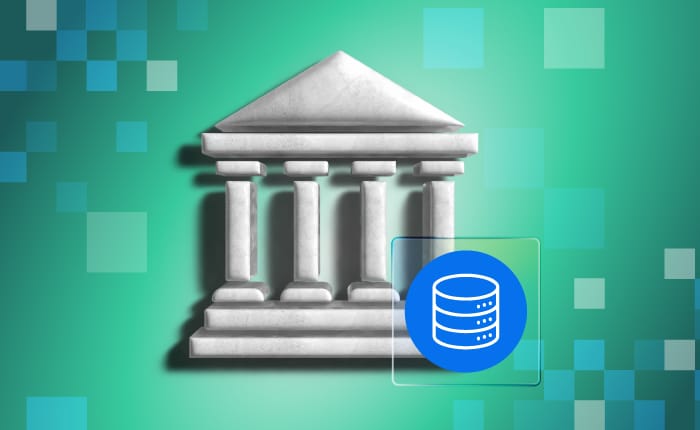As data becomes an increasingly critical asset for organizations across various industries and grows in complexity and volume, effective data governance is crucial. Data governance refers to the overall set of data management actions including the processes, policies, and procedures organizations should take to ensure data assets are secure, private, accurate, available, and usable. To establish a robust data governance framework, organizations often rely on four key pillars: Data quality, data stewardship, data protection and compliance, and data management. Let’s explore each of these pillars and their role in ensuring comprehensive data governance.
What Is Data Governance?
Before delving into the pillars of data governance, let’s establish a clear understanding of what a data governance program entails.
Data governance encompasses the overall management of an organization’s data assets to ensure the availability, usability, integrity, accuracy, privacy, and security of the data. It involves defining and implementing policies, procedures, and controls to govern the entire data lifecycle, from creation and collection to storage, analysis, dissemination, and deletion.
A good data governance strategy aims to establish accountability, transparency, and consistency in data-related decision-making processes across the organization.
Why Is Data Governance Important?
Data governance is of paramount importance in today’s digital landscape. It ensures data definitions are clearly defined and standardized across an organization, addressing any ambiguity or confusion that may arise.
Data governance ensures that organizations have access to good data — data that’s accurate, reliable, and consistent — by proactively tackling data issues like inconsistencies, inaccuracies, and duplications. The continual explosive growth of big data makes effective data governance even more critical as it enables organizations to harness their data’s full potential and integrate accurate automation processes for data management.
Further, data governance fosters data literacy within organizations, empowering employees to understand, interpret, and effectively use data for decision-making and problem-solving, and raising awareness around the importance of data security and data privacy.
Governance programs also pave the way for data science initiatives by providing a solid foundation of quality data that ensures data scientists can trust the data they analyze and derive meaningful insights from it. Overall, data governance is indispensable in today’s data-driven world, enabling organizations to leverage data effectively, make informed decisions, improve business processes, and drive innovation and success.
Who Is Involved in Data Governance?
Data governance is a collective effort involving multiple stakeholders across an organization. A data governance team typically comprises the following roles:
- Data Owners: These individuals or departments are responsible for defining and maintaining the overall data strategy, policies, and standards within an organization. Data owners ensure data aligns with business goals and objectives.
- Data Stewards: Data stewards are individuals responsible for the day-to-day management and oversight of specific data assets. They ensure data quality, integrity, and compliance with established policies and procedures.
- Data Custodians: Data custodians are responsible for the technical implementation and management of data storage, infrastructure, and security. They ensure the storage, backing up, and protection of organizational data.
- Data Users: These are individuals or departments relying on data to perform their job functions. Data users should understand and adhere to data governance policies and procedures to ensure data integrity and accuracy.
Four Pillars of Data Governance
Let’s discuss the four essential pillars of data governance forming the foundation of an effective data governance framework.
Data Quality
Data quality refers to the accuracy, completeness, consistency, and timeliness of data. Ensuring high-quality data is crucial for decision-making processes and deriving accurate insights. Data governance practices relating to data quality involve defining data standards, establishing data validation and cleansing processes, and implementing data quality monitoring and reporting mechanisms.
Data Stewardship
Data stewardship focuses on the accountability for and responsibility of managing and maintaining data assets. Data stewards play a vital role in overseeing data quality, ensuring compliance with policies and procedures, resolving data-related issues, and facilitating data governance initiatives. They collaborate with data owners, custodians, and users to establish data standards, define data usage guidelines, and enforce data governance policies.
Data Protection and Compliance
Data protection and compliance address the security and privacy aspects of data governance. Organizations must safeguard sensitive data from unauthorized access, breaches, or misuse. This pillar involves implementing security controls, encryption, access management, and data classification policies to protect data assets. It also includes ensuring compliance with relevant regulations like the General Data Protection Regulation (GDPR) or the Health Insurance Portability and Accountability Act (HIPAA).
Data Management
Data management encompasses the processes and practices for effectively managing data throughout its lifecycle. It involves data governance activities like data integration, data architecture, data modeling, data storage, data retention, and data lifecycle management. By establishing comprehensive data management practices, organizations can streamline data workflows, reduce data silos, and improve data accessibility and usability.
Data Governance Framework Best Practices
To establish a successful data governance framework, organizations should consider implementing the following best practices:
- Get proactive and gain executive support to ensure organizational commitment to data governance initiatives.
- Define clear roles and responsibilities for all stakeholders involved in data governance.
- Establish data governance policies and standards that align with business objectives and regulatory requirements.
- Develop data quality metrics and monitoring mechanisms to measure and improve data quality over time.
- Implement data governance tools and technologies to automate and streamline data governance processes.
- Continuously educate and train employees on data governance policies, procedures, and best practices.
- Regularly review and update data governance policies and procedures to adapt to changing business needs and regulatory requirements.
👉 Further reading: Data Privacy Training for Employees
Data Governance Framework Use Cases
Data governance frameworks can apply to various use cases across industries. Some common use cases include:
- Master Data Management: Organizations can use data governance to establish a centralized and authoritative source of master data, ensuring consistency and accuracy across systems and applications.
- Data Integration and Data Warehousing: Data governance helps organizations integrate and consolidate data from multiple sources into a central data warehouse, enabling efficient reporting, analytics, and decision-making.
- Regulatory Compliance: Data governance ensures organizations comply with industry regulations, privacy laws, and data protection requirements, reducing the risk of legal issues and financial penalties.
- Data Migration and System Consolidation: During mergers, acquisitions, or system upgrades, data governance facilitates smooth data migration, ensuring data integrity and minimizing business disruption.
Data governance plays a crucial role in ensuring the effective management, quality, and security of an organization’s data assets. The four pillars of data governance — data quality, data stewardship, data protection and compliance, and data management — provide a solid foundation for establishing a robust data governance framework.
By implementing best practices and leveraging data governance across various use cases, organizations can unlock the full potential of their data, make informed decisions, and achieve their business objectives while maintaining compliance and data integrity in an increasingly data-driven world.

